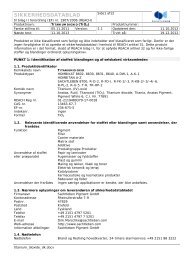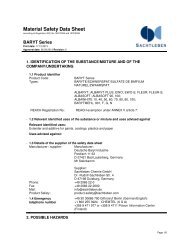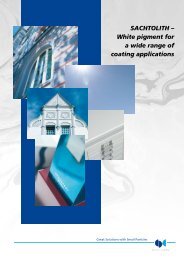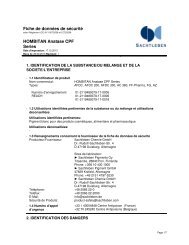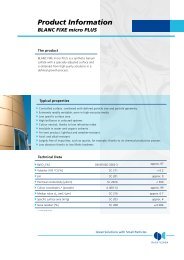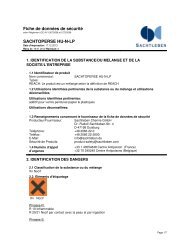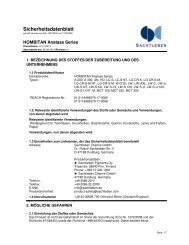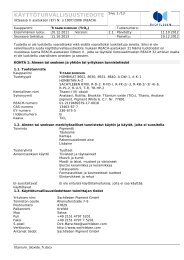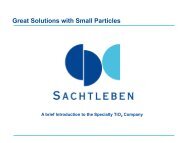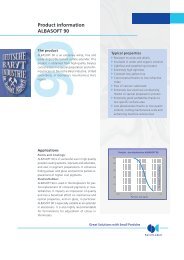Solutions for Masterbatches - Sachtleben Chemie GmbH
Solutions for Masterbatches - Sachtleben Chemie GmbH
Solutions for Masterbatches - Sachtleben Chemie GmbH
- No tags were found...
You also want an ePaper? Increase the reach of your titles
YUMPU automatically turns print PDFs into web optimized ePapers that Google loves.
Lacing and dye build-upThe majority of quality titanium dioxide pigments are inorganicallycoated. These coating compounds, usually consistingof oxyhydrates of aluminum, silica or zirconium, improve thepigment‘s resistance to weathering, and also have benefits <strong>for</strong>its wetting behavior and resistance to flocculation.Operation of plastic processing lines at ever higher throughputrates also increases processing temperatures, turning thebeneficial effects of inorganic coatings to a disadvantage - nothaving been subjected to such temperatures be<strong>for</strong>e. The coatedpigment grades tend to emit water into the polymer melt, whilethe oxyhydrates are converted to oxides.This loss of water occurs not continuously, but in stages. Superficialmoisture is evaporated at around 100° C; this water isgenerally extracted during vacuum degassing in the extruder, andthere is there<strong>for</strong>e no effect on polymer quality. Water generatedat temperatures above 200° C will have a significant negativeeffect on the polymer melt, however; this loss of crystallinewater results in polymer decomposition, lacing and dye build-up.A highly sophisticated, tailor-made inorganic coating reduces waterloss above 200° C, diminishing or even eliminating lacing and dyebuild-up during processing. SACHTLEBEN R 630 emits much lesswater at temperatures over 200° C than standard high-qualityinorganically coated rutile pigments.Lacing behavior of SACHTLEBEN R 630 (left hand side) compared to a standard rutile pigment(filling rate 20 % in LDPE)SACHTLEBEN R 630 is the firstchoice pigment if there is anydanger of lacing or dyebuild-up occurring.SACHTLEBEN RFK 2 sachtleben r 405 <strong>Sachtleben</strong> r 630Titanium dioxide classification R1 R2 R1Inorganic treatment(compounds based on:) AI AI AIOrganic treatment Polysiloxane Polysiloxane PolysiloxaneTiO 2content [%] approx. 98 approx. 96 approx. 98Undertone bluish bluish bluish7



